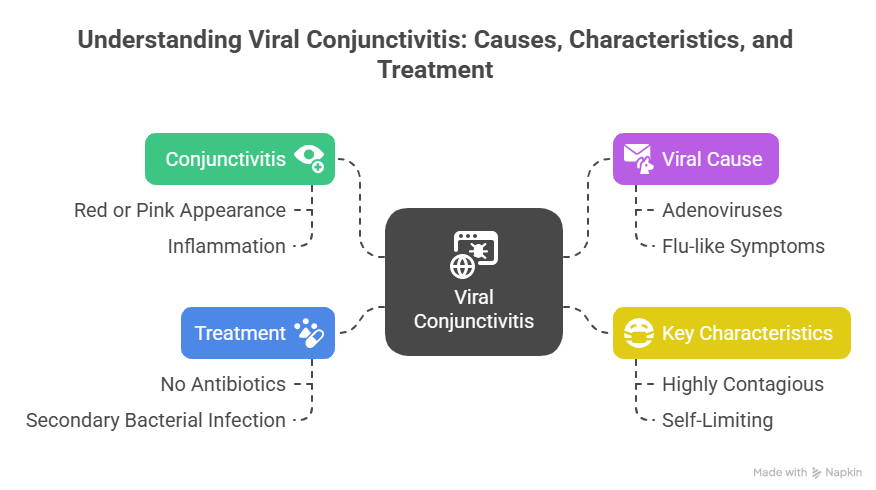|
Getting your Trinity Audio player ready...
|
Have you ever woken up with an eye that feels gritty, looks red, and just won’t stop watering? Perhaps you’ve heard friends or family members describe something similar, often referring to it as “eye flu.” It’s a common, often highly contagious, eye condition that can sweep through communities, leaving a trail of discomfort and inconvenience.
Understanding what this “eye flu” truly is and recognizing its early symptoms of eye flu are crucial steps in managing it effectively and preventing its spread. Today, we’re going to dive deep into the world of viral conjunctivitis – commonly known as “eye flu” – exploring what to watch out for, how it progresses, and most importantly, what you can do to protect yourself and others. At Indira Gandhi Eye Hospitals, we believe that informed patients are empowered patients, especially when it comes to safeguarding your precious eyesight.
What Exactly Is “Eye Flu”? Unpacking Viral Conjunctivitis

The term “eye flu” is a popular, informal name for viral conjunctivitis. To break it down:
- Conjunctivitis: This refers to the inflammation of the conjunctiva. The conjunctiva is a thin, transparent membrane that lines the inner surface of your eyelids and covers the white part of your eyeball (sclera). When it gets inflamed, the tiny blood vessels within it become more visible and dilated, giving the eye its characteristic red or pink appearance – hence the common lay term, “pink eye.”
- Viral: This specifies the cause. Unlike bacterial conjunctivitis (which is caused by bacteria and often produces thick, pus-like discharge) or allergic conjunctivitis (triggered by allergens and characterized by intense itching), “eye flu” is caused by a virus. Often, the culprits are adenoviruses, which are also responsible for many common cold and respiratory infections. This connection is why it’s often associated with “flu-like” symptoms.
Key Characteristics of “Eye Flu”:
- Highly Contagious: This is its most significant feature. Viral conjunctivitis spreads incredibly easily, often through direct contact with eye secretions (e.g., rubbing your infected eye and then touching a doorknob, which someone else then touches).
- Self-Limiting: For most healthy individuals, the infection typically runs its course on its own, much like a common cold. Symptoms usually improve within one to three weeks.
- No Antibiotic Treatment: Since it’s a viral infection, antibiotics are completely ineffective and should not be used unless a secondary bacterial infection develops (which is rare). Overuse of antibiotics for viral conditions can contribute to antibiotic resistance.
Red, Itchy, Watery Eyes? Don’t Ignore the Signs!
Eye flu spreads fast — and early symptoms like redness, irritation, and stickiness need urgent care. Get expert diagnosis and start fast-acting treatment today.
Get Treated for Eye Flu Now
